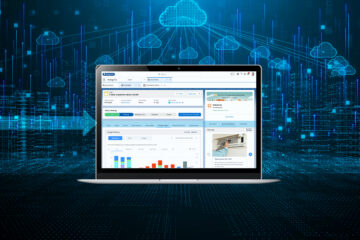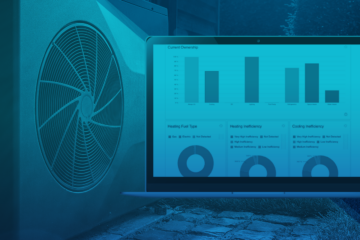Customer engagement driven by utilities is experiencing renewed momentum in Europe as Covid-19 has resulted in many citizens occupying their homes for significantly more hours of the day. As the northern hemisphere heads toward winter and cold weather drives up gas and electricity consumption for heating, timely and highly personalized digital engagement will be critical for energy retailers to mitigate the impact of customer credit risk.
Energy retailers must seize this revived opportunity to reposition their brand around digital customer engagement and customer-centricity. In fact, according to IDC, targeting consumers with highly personalized offers for new services is shown to help energy retailers boost non-kWh revenue by up to 100% and increase gross margin per customer by 3% to 8%.
To even just have a chance at succeeding, energy retailers need to reorganize their internal processes and technologies to put the customer at the heart of their operations. This includes creating a road map that prioritizes what matters most to customers, and what currently makes them most unsatisfied. The foundation for this road map is customer data — specifically how it is accessed, interpreted, and used to drive business outcomes.
In general, European energy retailers have left the tremendous value of customer data largely untapped, mainly due to a lack of focus and technology capabilities. Their efforts to understand their customers have often been siloed into business departments and connected to static data collection processes such as outbound call centers, home energy audits, focus groups, and consumer surveys. This approach is expensive and mostly static. Looking at the cost side alone, according to IDC, it is estimated that obsolete and siloed customer data is responsible for 10% to 30% of an average energy retailer’s cost to serve, with leaders in this area saving up to 70% compared to laggards when it comes to serving customers. A siloed approach also offers minimal data granularity, and the data collected quickly becomes obsolete. Accordingly, efforts to improve CX have suffered from a chronic inability to offer consistent functionality and information across channels and touchpoints.
Additionally, IDC research shows that:
- 80% of consumers consider personalization central to a positive and long-lasting CX, while the lack thereof contributes to about a third of all switching occurrences today.
- Providing high-bill alerts, personalized tariff advice, energy analytics, and predictive customer service is shown to reduce churn rates by 30% to 60%.
- Only 3 in 10 European consumers believe their energy retailer offers a personalized CX.
Clearly there is a significant gap between potential and current performance. Digital challengers, such as Bulb, Wekiwi, Holaluz, and Tibber are reaping the benefits of customer engagement and personalization to increase customer advocacy, loyalty, and most importantly lifetime value.
To thrive rather than just survive in this market, European energy retailers must invest in artificial intelligence (AI) to make the most of their energy user data. Specifically, companies should leverage what IDC calls AI-driven energy insights platforms (AEIPs) that enable them to exploit customer energy data to:
- optimize their decision making
- build customer trust by helping them make more sustainable and cost-effective decisions
- lower cost to serve by reducing customers’ need to contact them
- generate customer insights that are dynamic and highly granular and can be adapted to the requirements of disparate business processes across departments and customer touchpoints
Additionally, AEIPs provide energy retailers with white-label tools and APIs. This helps energy retailers quickly deploy new customer-facing features and embed data intelligence within their existing processes. It creates new opportunities for ongoing and immediate two-way customer interaction and helps companies determine, with growing effectiveness, which channel is the most responsive for each customer and journey touchpoint to further streamline customer engagement.
Companies building on personalized customer self-service, a single customer view powered with rich live data, and tariff innovation top customer satisfaction charts with scores well over 70% and peaks of almost 90% according to IDC.
To learn more about how AEIPs deliver value – and find out more about IDC’s AEIP checklist and the six steps to new business models – see IDC’s “Customer Data is the New kWh” Technology Spotlight.
About IDC
International Data Corporation (IDC) is the premier global provider of market intelligence, advisory services, and events for the information technology, telecommunications and consumer technology markets. IDC helps IT professionals, business executives, and the investment community make fact-based decisions on technology purchases and business strategy. More than 1,100 IDC analysts provide global, regional, and local expertise on technology and industry opportunities and trends in over 110 countries worldwide. For 50 years, IDC has provided strategic insights to help our clients achieve their key business objectives. IDC is a subsidiary of IDG, the world’s leading technology media, research, and events company.


